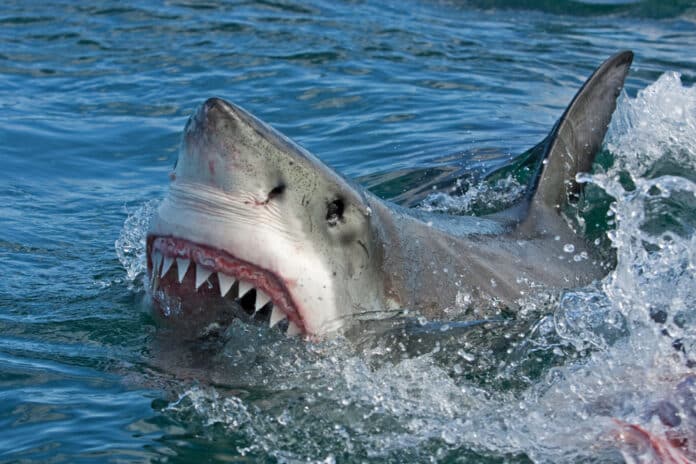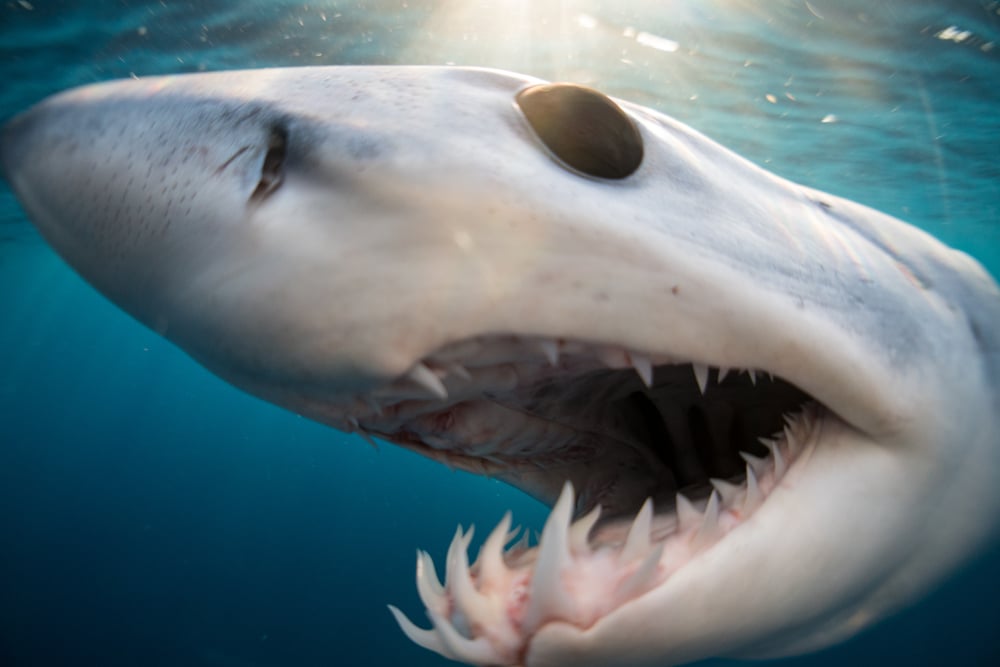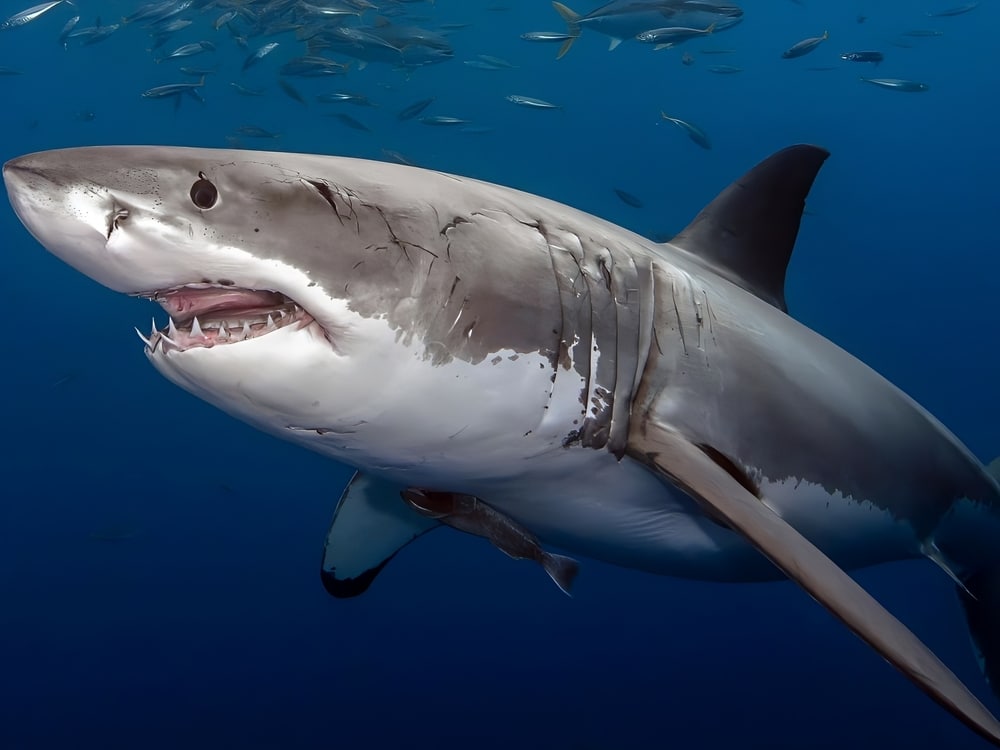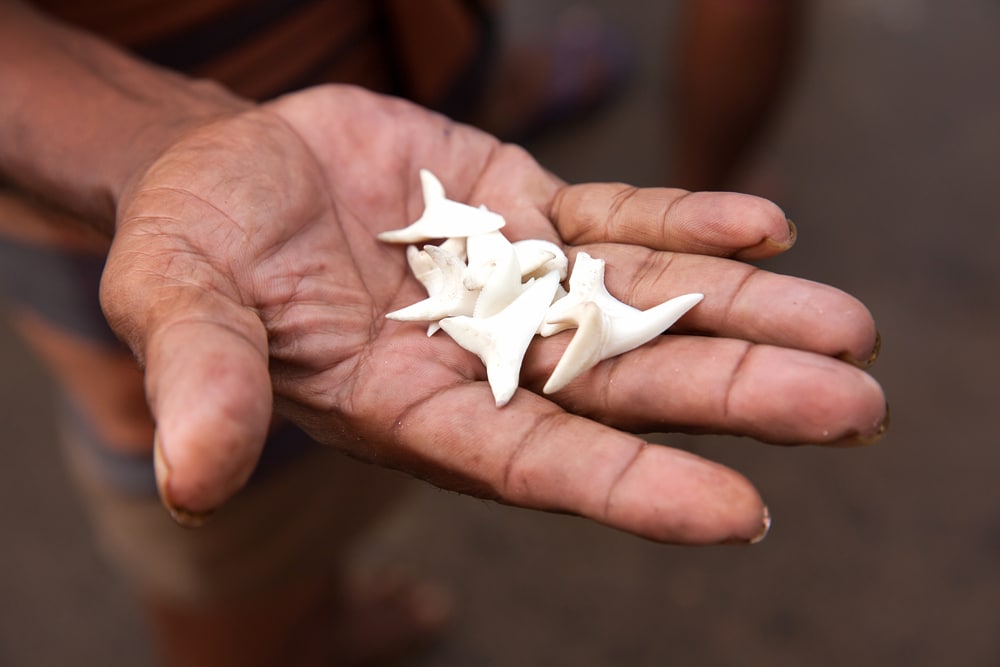
How many teeth do sharks have?
Table of Contents

Fascinating, disturbing, impressive… There is no shortage of adjectives to describe sharks.
Whether big or small, sharks evoke many emotions in anyone who looks at them.
While some sharks feed only on plankton, such as the whale shark, others are formidable predators for fish and marine mammals. The white shark has even become the symbol of this!
Renowned for their large jaws and merciless teeth, sharks have quite fragile, and sometimes even non-functional, teeth.
From the smallest to the largest, from the most effective to the most useless, discover all the secrets of shark teeth!
Boneless jaws

Did you know that sharks do not have hard skeletons?
Indeed, sharks are portion of the Chondrichthyes, a lesson of angle with a skeleton made as it were of cartilage.
It is this cartilage, which is twice as light as bones, that permits them to be quick in spite of their in some cases forcing size. It is also this physical peculiarity that makes their jaws more mobile.
The sharks’ teeth are therefore not fixed on their jaws, but only planted in their gums. That’s why they often lose them.
Luckily for them, sharks are polyphyodont animals. Unlike humans, for example, their teeth are renewed throughout their lives!
How do shark teeth evolve?
The teeth of sharks have a unique functioning.
Because teeth are not fixed in a bone, but simply planted in the gum tissue, they fall out quite quickly once they are broken. Indeed, too much pressure could damage the shark’s jaw. It is therefore the tooth that ends up giving way first.
Unlike other animals, sharks don’t need to wait for a new tooth to grow back. The one positioned in the row behind is already ready, and moves forward to take the place left free, sometimes in a single day!
Nature being well made, sharks with a higher risk of losing teeth are also the ones who have the most! Generally, only the first 2 rows are used for food, the others are used to replace the missing teeth.
How many teeth do sharks have?

The number of teeth differs according to the varieties of sharks.
The iconic white shark, for example, has 2 rows of teeth called “main teeth”. Behind it are 2 to 5 additional rows, for an estimated total of about 3,000 teeth.
The tiger shark has 3 rows of about 40 teeth each. That is a total of 1,200 teeth.
The hammerhead shark has only 2 rows, for a total of 80 teeth.
If the whale shark does not use its tiny teeth to feed, there are still 3,000 of them spread over its gums!
As for the carpet shark, with its 190 teeth, it is distant behind the zebra shark which has more than 1,000 teeth.
What are shark teeth made of?
If, in humans, enamel is the last thing that forms on the tooth, it is the opposite for the shark. It is also harder and very rich in minerals.
Inside the tooth is a nucleus, made up of either orthodentin, which is quite compact, or osteodentin, which is more spongy and physiologically close to a bone.
On the surface of the teeth, a large amount of fluoride prevents the appearance of cavities.
Each shark has its own tooth shape

Sharks do not all have the same diet, so they naturally have different teeth.
Filter Sharks
The so-called filter-feeding sharks, such as the whale shark and the basking shark, have very small teeth.
Because they feed mainly on plankton and fish not exceeding 10 cm in length, these teeth are only used during the mating period, to cling to their partner.
Large predators
The jaws of the white shark have saw-shaped teeth. Pointed and serrated, they allow this predator to cut up its prey to better swallow it.
Those of the tiger shark have a slightly different shape, but are fully serrated. No turtle shell can resist it!
As for the teeth of the shortfin mako shark, like those of the hammerhead shark, they are molded like a snare that offer assistance it to superior hold its prey.
At the foot of the ocean
Often at the foot of the water to discover its nourishment, the guitar shark, like the nurture shark, has thicker and compliment teeth than other sharks. Combined with the quality of its jaws, they are utilized to open shellfish more effectively, as well as the shells of crustaceans.
As its title recommends, the carpet shark camouflages itself on the ground to way better capture the creatures that serve as its supper. Squid, eels, rays… To grasp them as they move, it has needle-like teeth.
Not all sharks are equal in number and tooth shape. Whatever the shark, the teeth of this fish always impress the person who observes it.
Some scientific studies have estimated that a lemon shark can lose more than 30,000 teeth throughout its life! The ferocious shark, on the other hand, does not lose a tooth but a full row each time!
In this exciting world of sharks, which one impresses you the most?





Can you be more specific about the content of your article? After reading it, I still have some doubts. Hope you can help me.
Thanks for sharing. I read many of your blog posts, cool, your blog is very good. https://www.binance.info/ar/register-person?ref=V2H9AFPY